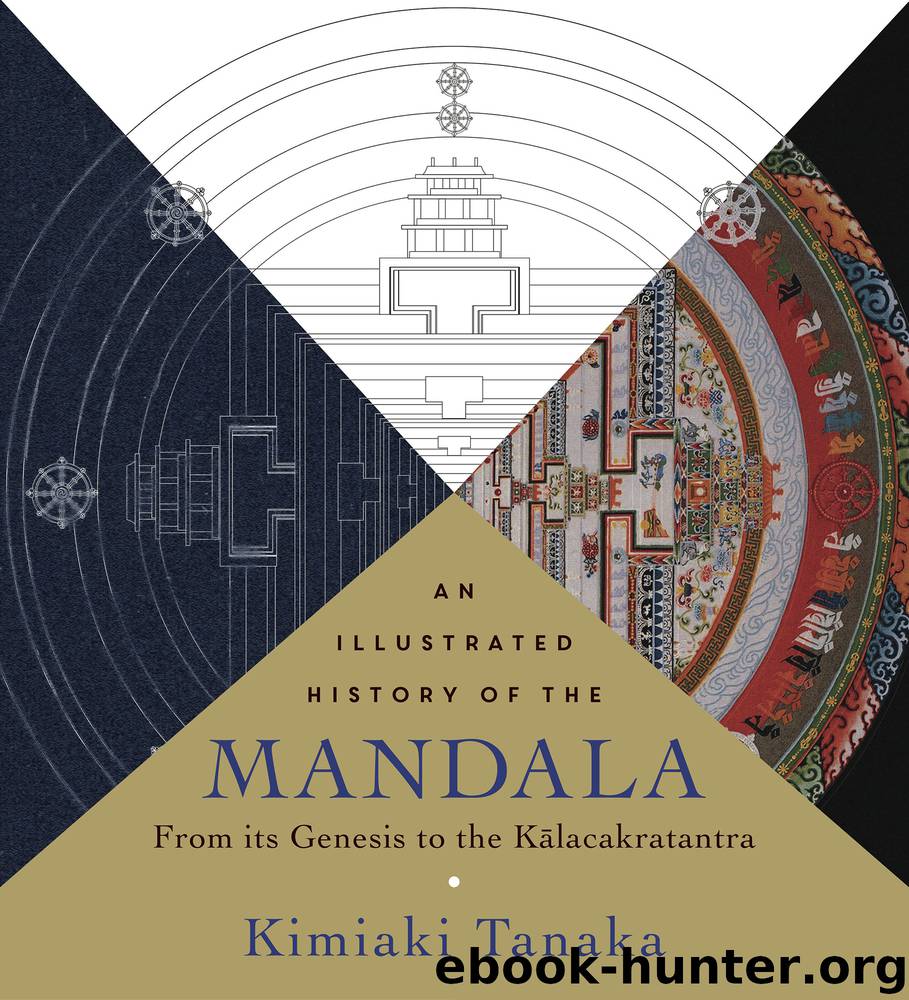An Illustrated History of the Mandala by Kimiaki Tanaka

Author:Kimiaki Tanaka
Language: eng
Format: epub
Publisher: Wisdom Publications
In Cave 1 at Dungkar in western Tibet there are depicted two examples of the Guhyasamāja-maṇḍala, the thirty-two-deity maṇḍala of Akṣobhyavajra of the Ārya school and the nineteen-deity maṇḍala of Mañjuvajra of the Jñānapāda school. The maṇḍalas on the north wall of Dungkar Cave 1 render the deities that ought to be depicted as father-mother couples separately. In particular, in the thirty-two-deity maṇḍala of Akṣobhyavajra, Sparśavajrā, Akṣobhyavajra’s consort, is placed in the outer square, and consequently another deity has been added to the outer square to maintain left-right symmetry, resulting in changes to the arrangement of the deities. This is thought to have been the result of a rigorous application of the rule in late tantric Buddhism that father-mother images should be shown only to initiates and must not to be shown to the public.
In Tibet most examples of the thirty-two-deity maṇḍala of Akṣobhyavajra of the Ārya school have four gates without a roof (har sgo). This is based on v. 11 in chapter 4 (“Khaṭikāsūtrapātanavidhi”) of the Viṃśatividhi.561 Further, in the Mitra brgya rtsa set of maṇḍalas the Guhyasamāja-maṇḍalas of both the Jñānapāda school (V-1) and Ārya school (V-2) are included. However, the iconometry and design of the gates in the maṇḍala of the Ārya school in the Hahn Foundation handscroll562 differ from the norms of the Ārya school, which follows the har sgo style frequently found in other examples from Tibet.
The Guhyasamāja-Lokeśvara maṇḍala is a variant form of the Guhyasamāja-maṇḍala (Jñānapāda school) in which Mañjuvajra has been replaced as the main deity by Lokeśvara, a form of Avalokiteśvara with three heads and six arms. It was devised by Atīśa for King Lhatsunpa Jangchup Ö of western Tibet, who worshiped the Guhyasamājatantra and Avalokiteśvara.563 It became popular in Tibet, and examples are found in the Ngor maṇḍalas564 and among the wall paintings along the corridor of the Southern monastery at Sakya.565
In addition to the Indrabhūti, Jñānapāda, and Ārya schools, the existence of an Ānandagarbha school as a school of interpretation of the Guhyasamāja has also been reported.566 However, no examples of maṇḍalas belonging to either the Indrabhūti or Ānandagarbha schools have been found in Tibet.
Download
This site does not store any files on its server. We only index and link to content provided by other sites. Please contact the content providers to delete copyright contents if any and email us, we'll remove relevant links or contents immediately.
The Way of Zen by Alan W. Watts(5786)
Ego Is the Enemy by Ryan Holiday(3982)
The Art of Happiness by The Dalai Lama(3376)
The Book of Joy by Dalai Lama(3212)
Why Buddhism is True by Robert Wright(2816)
Shift into Freedom by Loch Kelly(2688)
Spark Joy by Marie Kondo(2671)
Happiness by Matthieu Ricard(2516)
A Monk's Guide to a Clean House and Mind by Shoukei Matsumoto(2399)
The Lost Art of Good Conversation by Sakyong Mipham(2124)
The Meaning of the Library by unknow(2064)
The Third Eye by T. Lobsang Rampa(1882)
The Unfettered Mind: Writings from a Zen Master to a Master Swordsman by Takuan Soho(1858)
Anthology by T J(1750)
Red Shambhala by Andrei Znamenski(1744)
The Diamond Cutter by Geshe Michael Roach(1668)
Thoughts Without A Thinker: Psychotherapy from a Buddhist Perspective by Epstein Mark(1589)
Advice Not Given by Mark Epstein(1518)
Twilight of Idols and Anti-Christ by Friedrich Nietzsche(1488)
